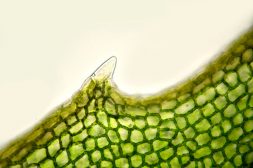Definition
noun, plural: simians
Any of the placental primates, particularly hominins, apes and monkeys
Supplement
Primates are placental mammals that may be grouped into prosimians and simians. Prosimians are characterized by their rather primitive features compared with those of simians. They include lemurs, lorisoids, tarsiers, adapiforms, and non-simian omomyids. Simians include hominins, apes, and monkeys.
Taxonomically, the order Primates has two suborders: the Strepsirrhini and the Haplorhini. The Haplorhini includes the simians and the tarsiers. The tarsier line and the simian line diverged during the Cenozoic era, i.e. about 60 million years ago. The simians may be subdivided into two major groups: catarrhines (Old World monkeys and apes) and platyrrhines (New World monkeys). Catarrhines are characterized by having the nostrils close together (narrow-nosed). They include gibbons, orangutans, gorillas, chimpanzees, and humans. Platyrrhines are simians characterized by having a flat-bridged nose. They include the marmosets, tamarins, capuchins, squirrel monkeys, owl monkeys, titis, sakis, uakaris, woolly monkeys, etc.
Word origin: Latin sīmia (ape, monkey), Greek simós (snub-nosed)
Scientific classification:
- Kingdom: Animalia
- Phylum: Chordata
- Class: Mammalia
- Order: Primates
- Suborder: Haplorhini
- Infraorder: Simiiformes (Haeckel, 1866)
See also:
Related term(s):
- Simian fissure
- Simian virus







